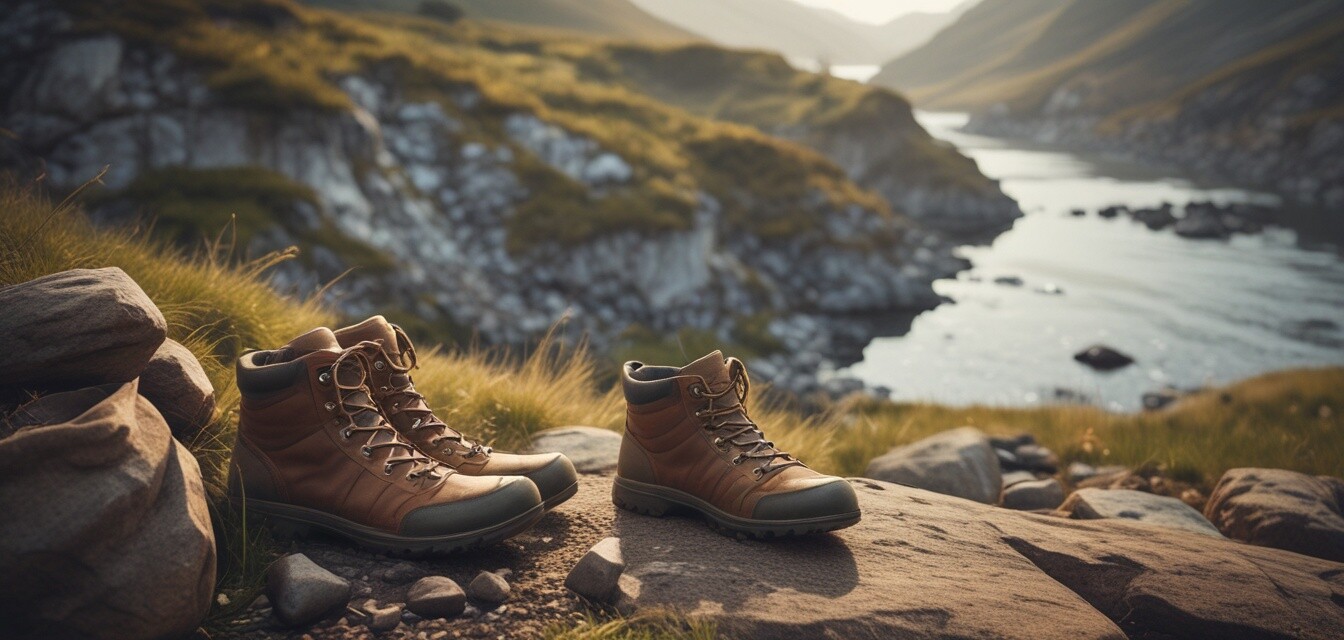
How to choose the right camping shoes
- Comfort is key; ensure a proper fit and cushioning.
- Support matters; choose shoes with good ankle support for rocky terrains.
- Consider the terrain you'll be navigating—hiking shoes and boots should match your environment.
- Breathability is crucial for warm weather camping.
- Don't forget to break in your shoes before hitting the trail.
When embarking on a camping adventure, choosing the right shoes is just as critical as selecting the perfect tent or sleeping bag. The right pair can enhance your comfort, boost your performance, and keep your feet happy throughout your journey. In this guide, we'll help beginners navigate through the factors to consider when selecting the best camping shoes or boots, focusing on comfort, support, and terrain suitability.
Types of camping shoes
Understanding the different types of camping shoes is the first step toward making an informed decision. Here are the primary options available:
| Type | Description | Best For |
|---|---|---|
| Hiking Boots | Sturdy footwear providing ankle support and durability. | Rugged terrains and long hikes. |
| Trail Runners | Lightweight and flexible shoes designed for speed. | Fast hikes and well-maintained trails. |
| Sandals | Open-toed footwear offering breathability. | Warm weather and casual settings. |
| Campsite Shoes | Comfortable and easy-to-wear shoes for around the campsite. | Relaxing at the campsite after a long day. |
Factors to consider when choosing camping shoes
To find the best pair for your needs, consider these factors:
- Comfort: Look for shoes with adequate cushioning and a good fit.
- Support: Shoes with ankle support are vital for uneven terrains.
- Traction: Ensure the sole provides enough grip for the terrain you will be on.
- Material: Choose breathable and water-resistant materials to keep feet dry.
- Weight: Lighter shoes are easier to carry on long treks, but may sacrifice support.
Breaking in your shoes
New shoes, even the best ones, can cause discomfort if worn for extended periods without breaking them in. Here are some tips:
- Wear them at home: Start wearing them during daily activities before you head out camping.
- Gradual use: Take shorter hikes to allow your feet to adjust to the shoes.
- Use during different activities: Incorporate walking, hiking, and even running to ensure overall comfort.
Choosing the right terrain
The type of terrain you will be hiking on significantly impacts your choice of shoes. Here’s a breakdown of the suitable shoes based on terrain:
| Terrain Type | Recommended Shoe Type |
|---|---|
| Rocky Paths | Hiking boots with rigid soles and good ankle support. |
| Forest Trails | Trail runners for agility and comfort. |
| Sand or Beach | Water-friendly sandals or lightweight shoes. |
| General Camping | Comfortable campsite shoes for ease. |
Tips for first-time buyers
Beginner's Section
- Visit a store to try on several shoe types for fit and feel.
- Check customer reviews online for real-user feedback.
- Consider the weather and temperature conditions of your camping destination.
- Look for clearance sales or seasonal discounts to get quality shoes.
- Invest in moisture-wicking socks to enhance comfort.
Pros
- Increased comfort ensures a better outdoor experience.
- Proper support reduces the risk of injuries.
- A correct fit enhances performance on various terrains.
- Quality materials improve durability and longevity.
- Being well-equipped enhances confidence in outdoor settings.
Cons
- High-quality shoes can be a significant investment.
- Finding the perfect fit might take time.
- Certain types may not be available in all stores.
- Breaking in new shoes requires extra time and patience.
- Some shoes may not be suitable for transitional weather.
Final thoughts
Choosing the right camping shoes can significantly impact your outdoor experience. Whether you’re exploring rugged trails in hiking boots or enjoying a lazy afternoon in comfy sandals, understanding your options and considering your specific needs are vital. Don't forget, comfort, support, and terrain suitability are the keys to making the best choice. Ready to explore more tips on camping gear? Check out our Camping Buying Guides for insightful information.